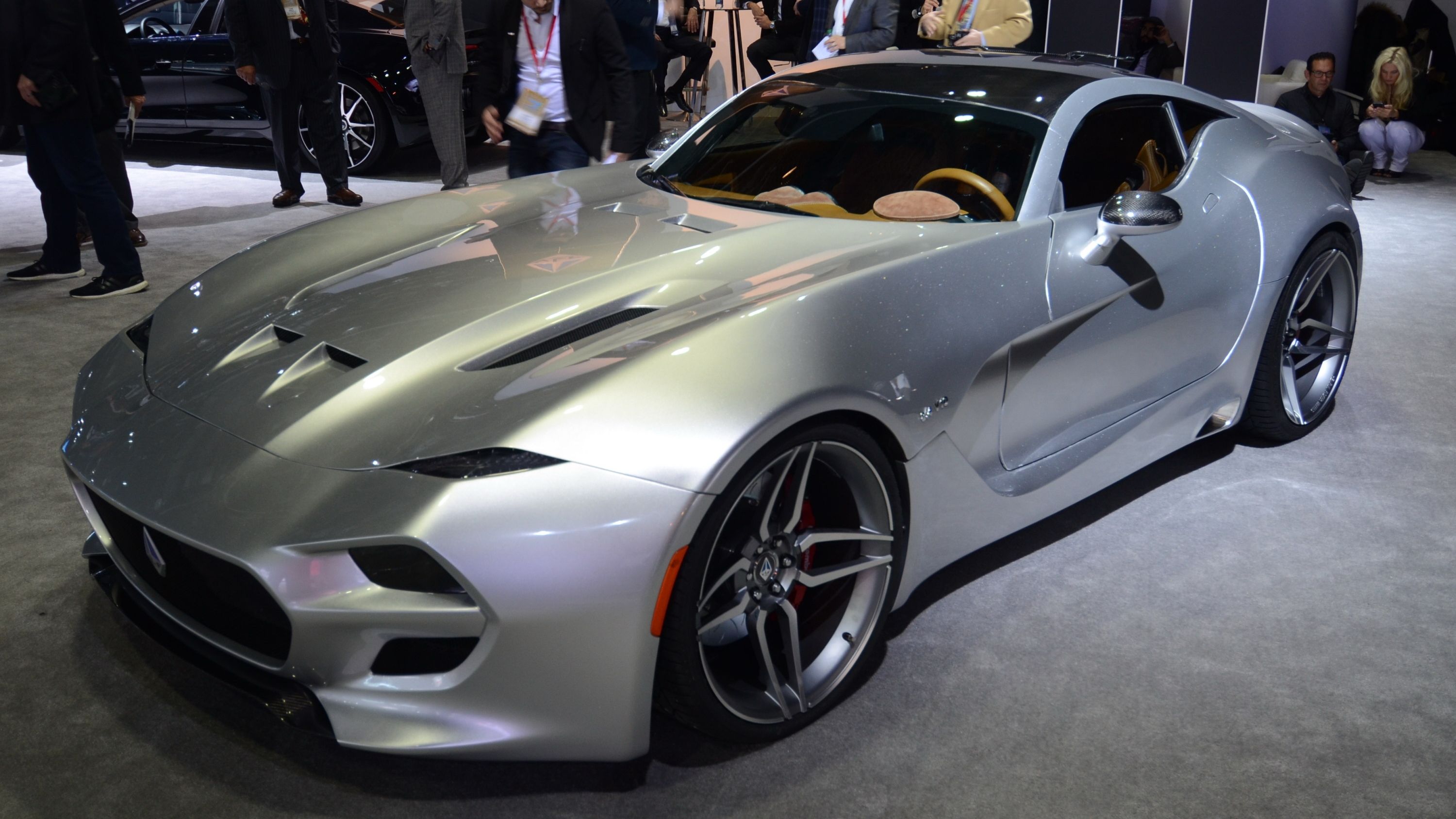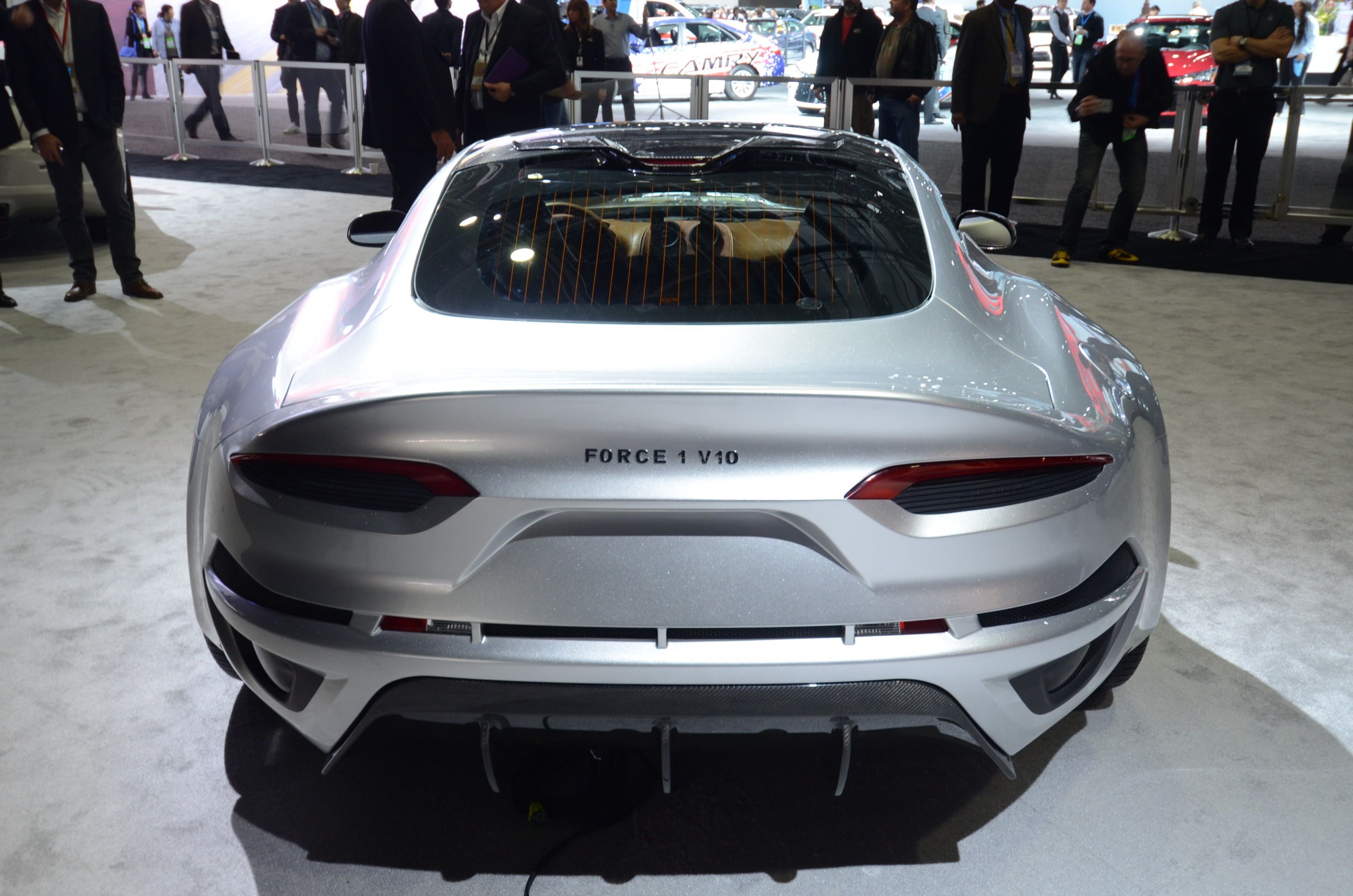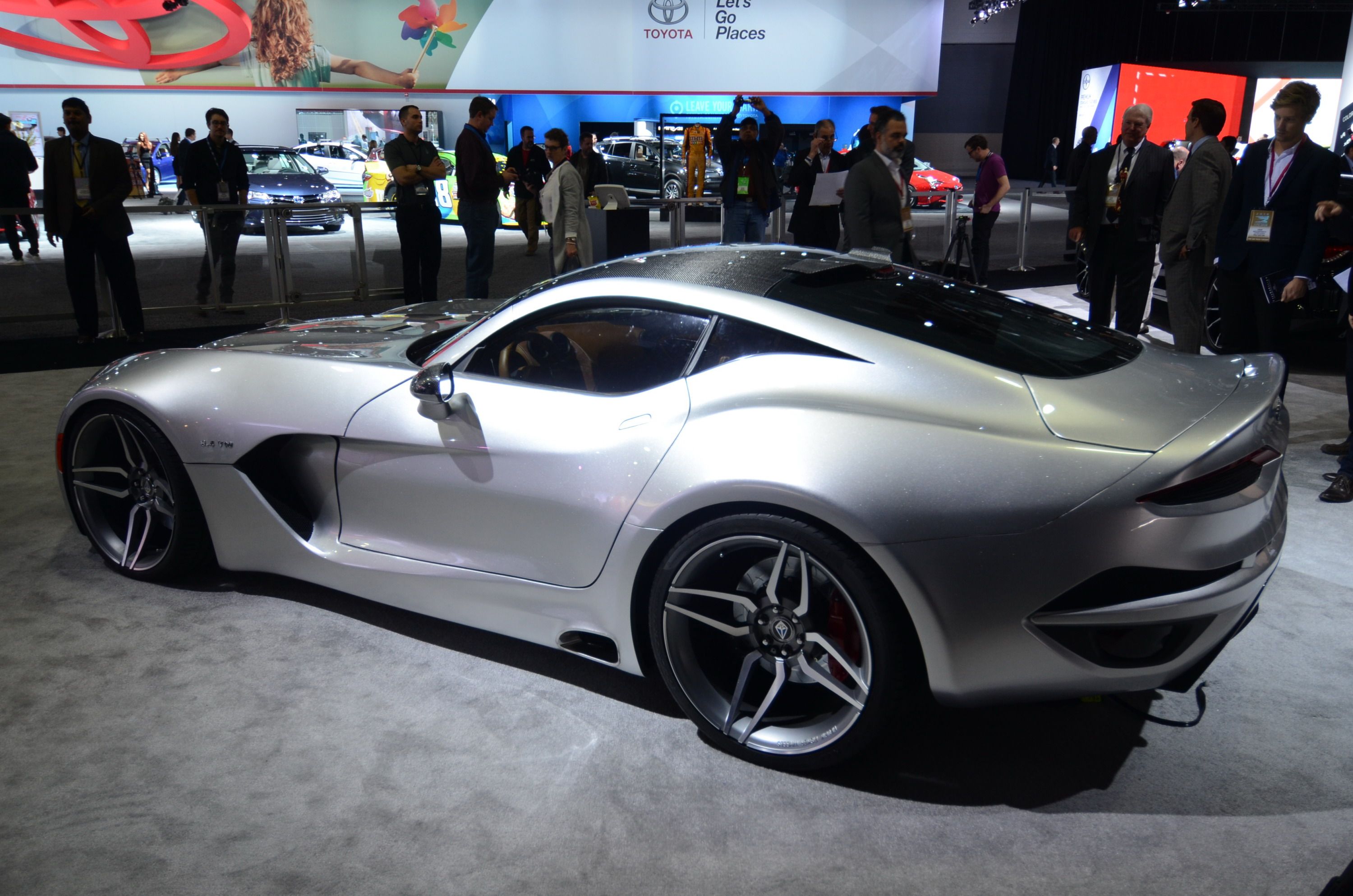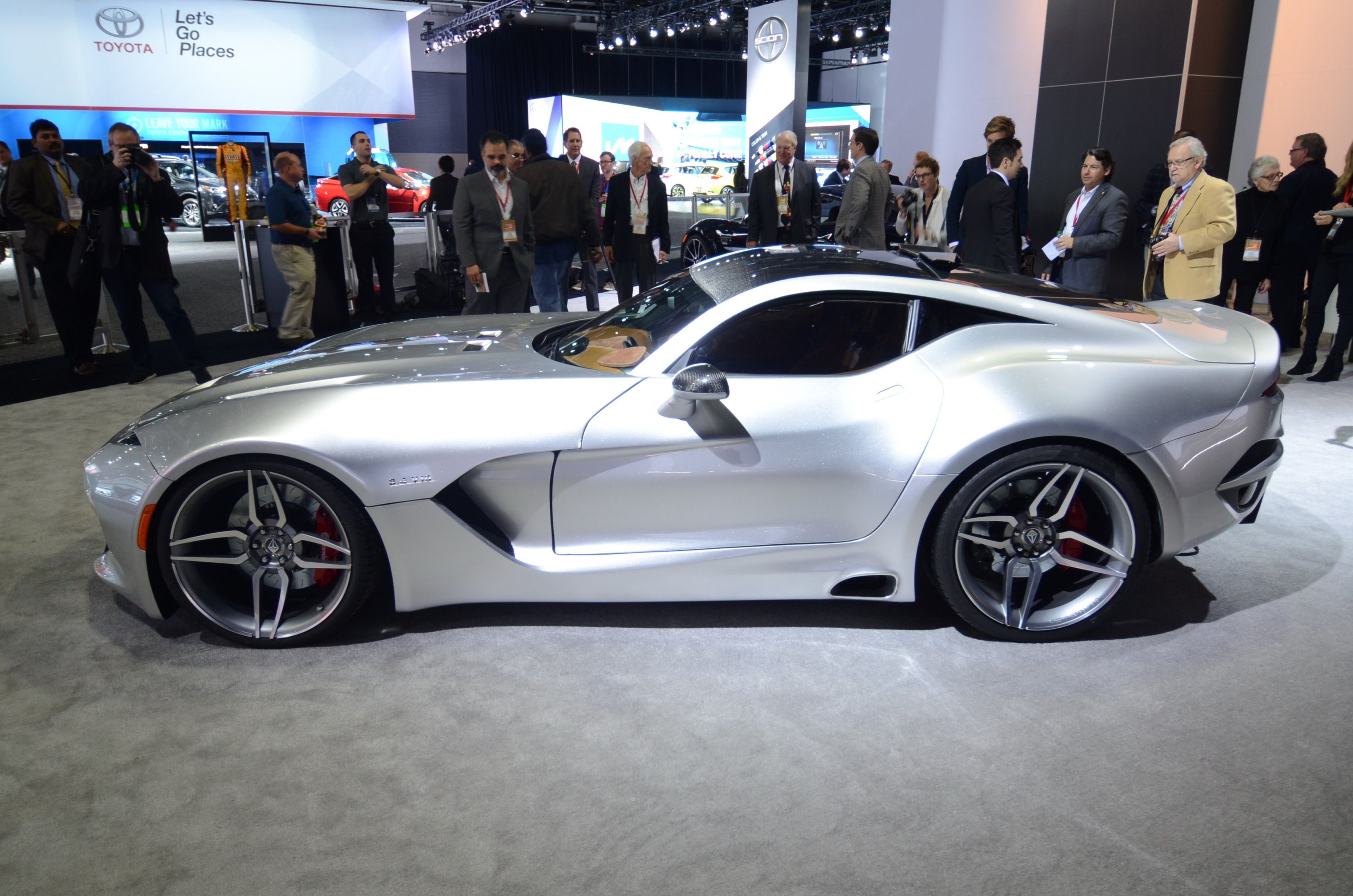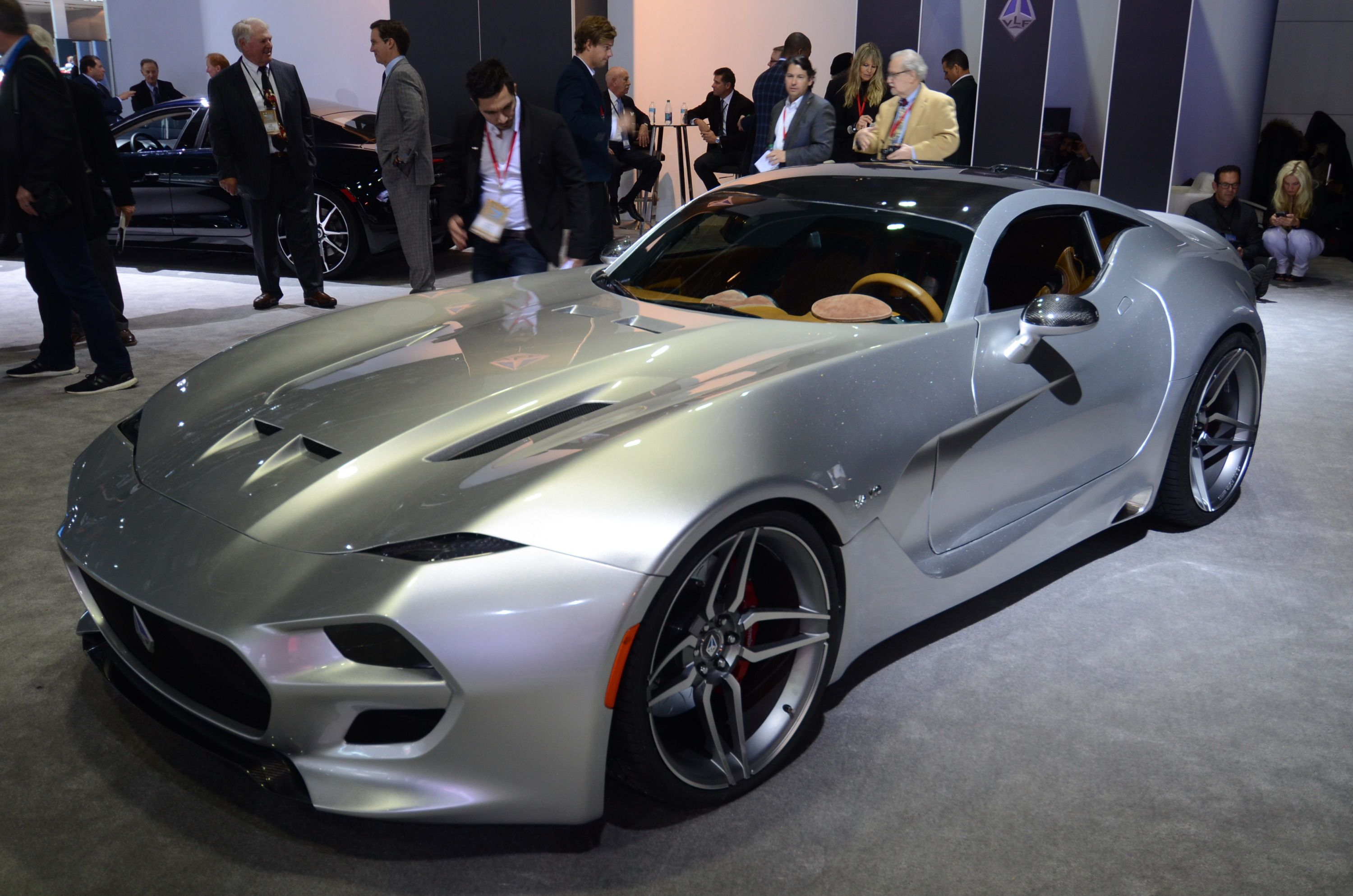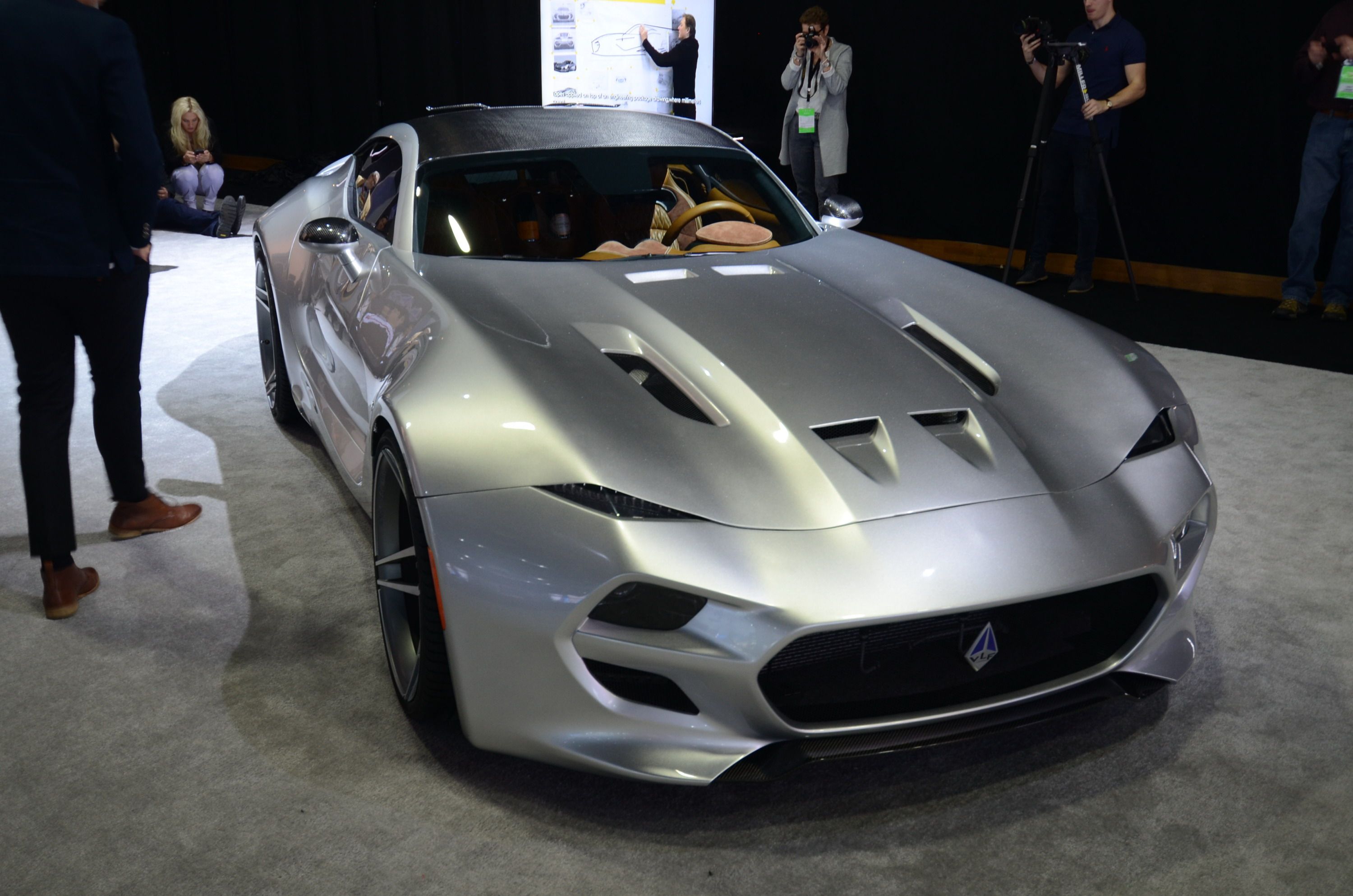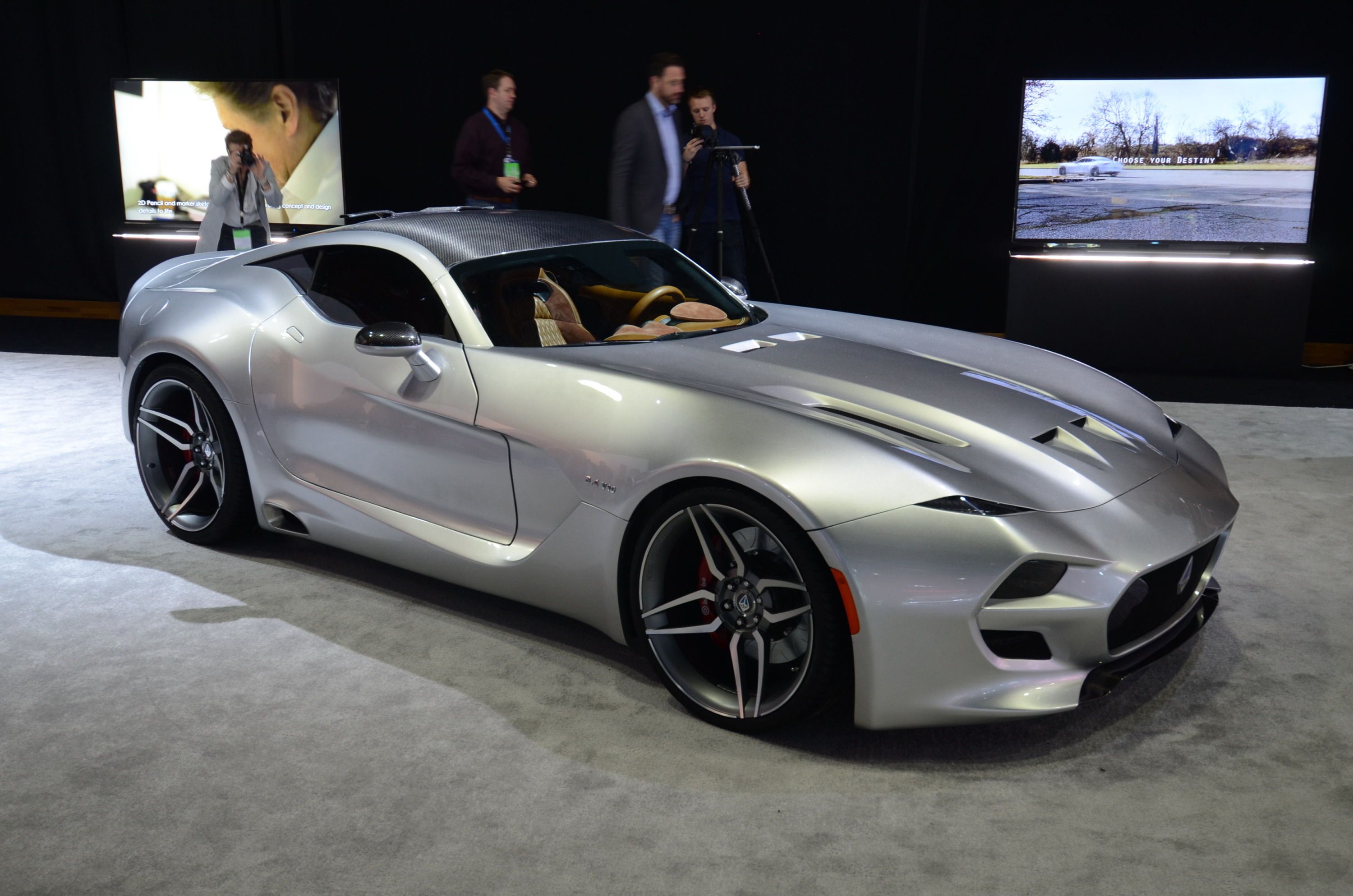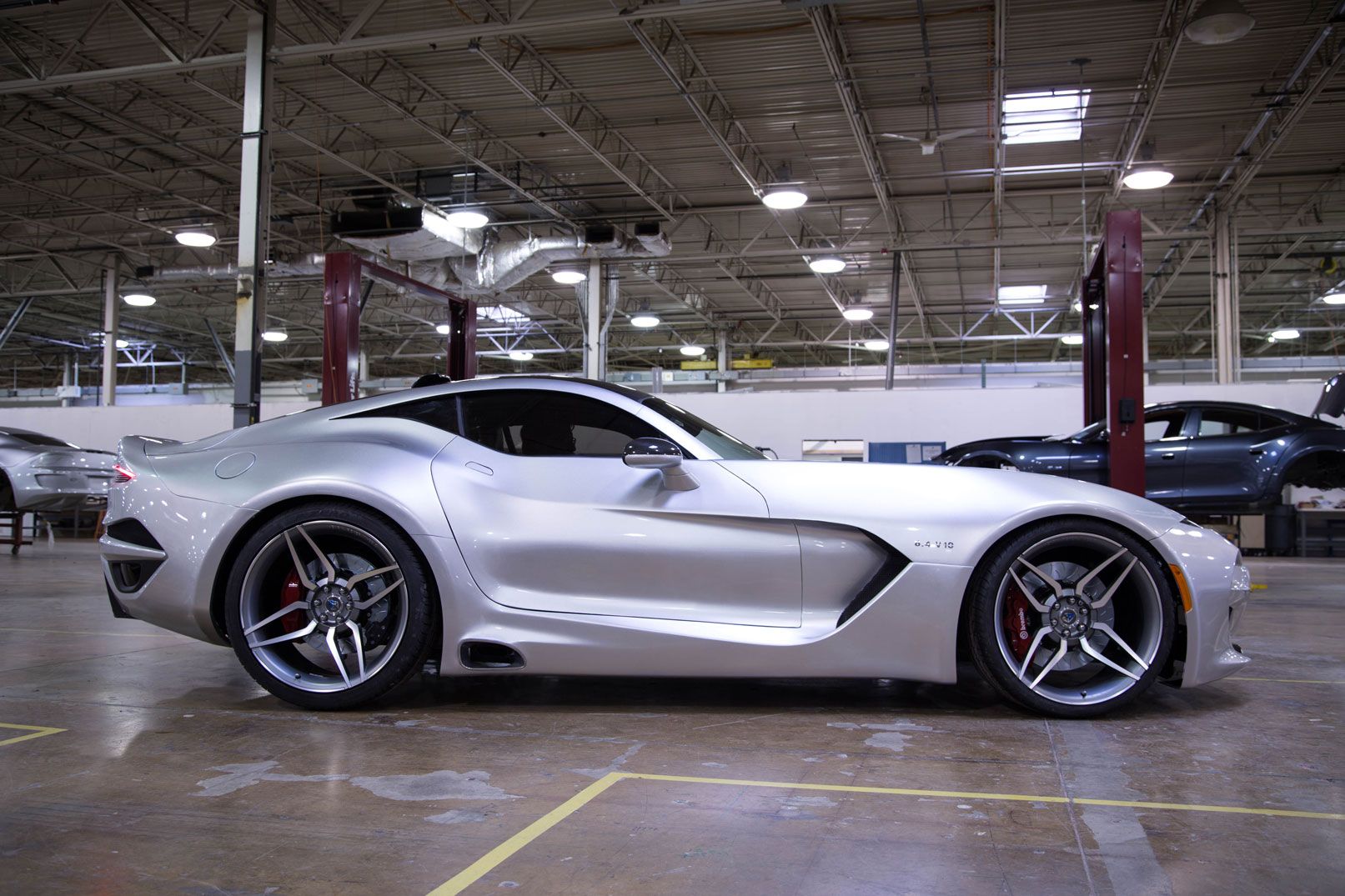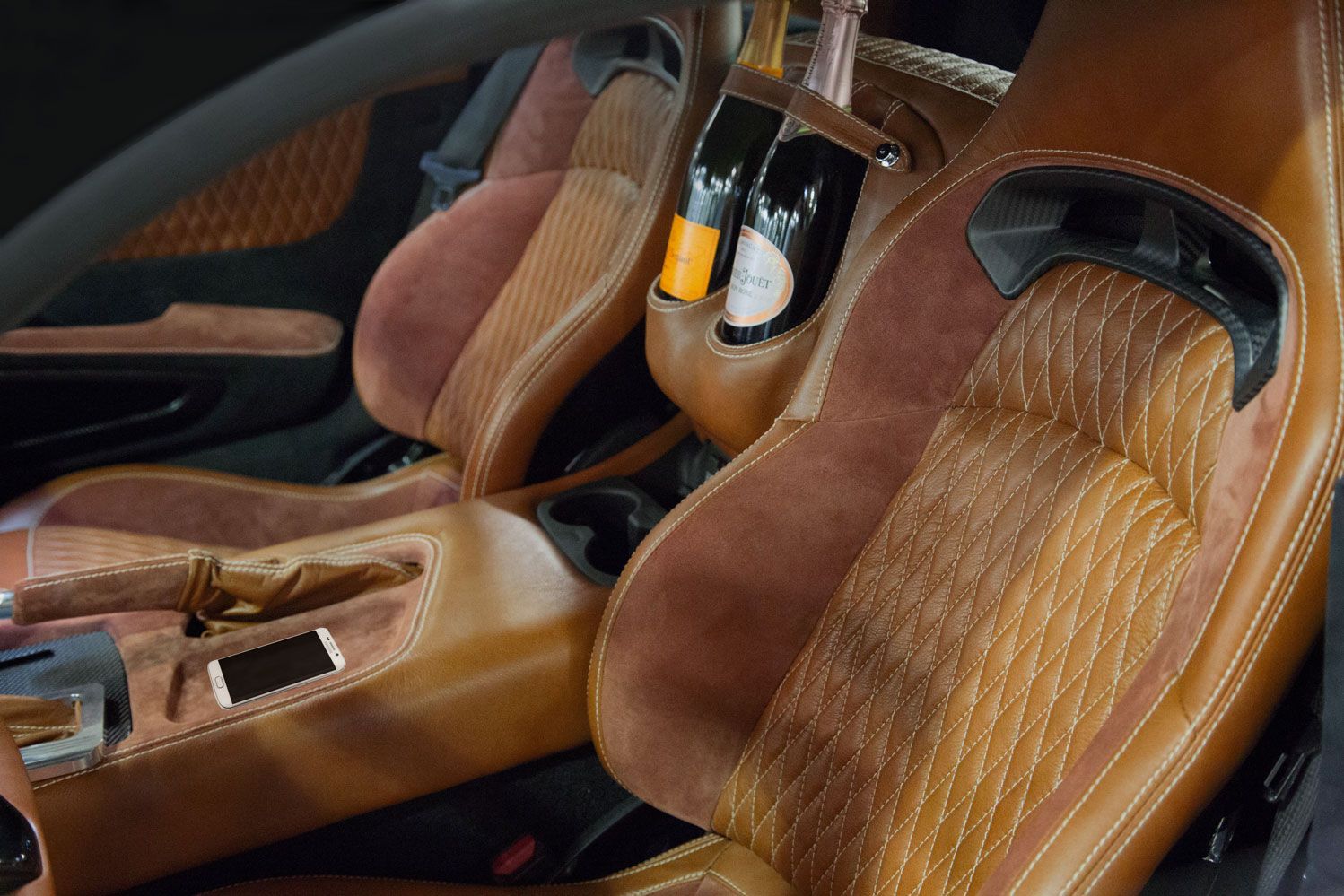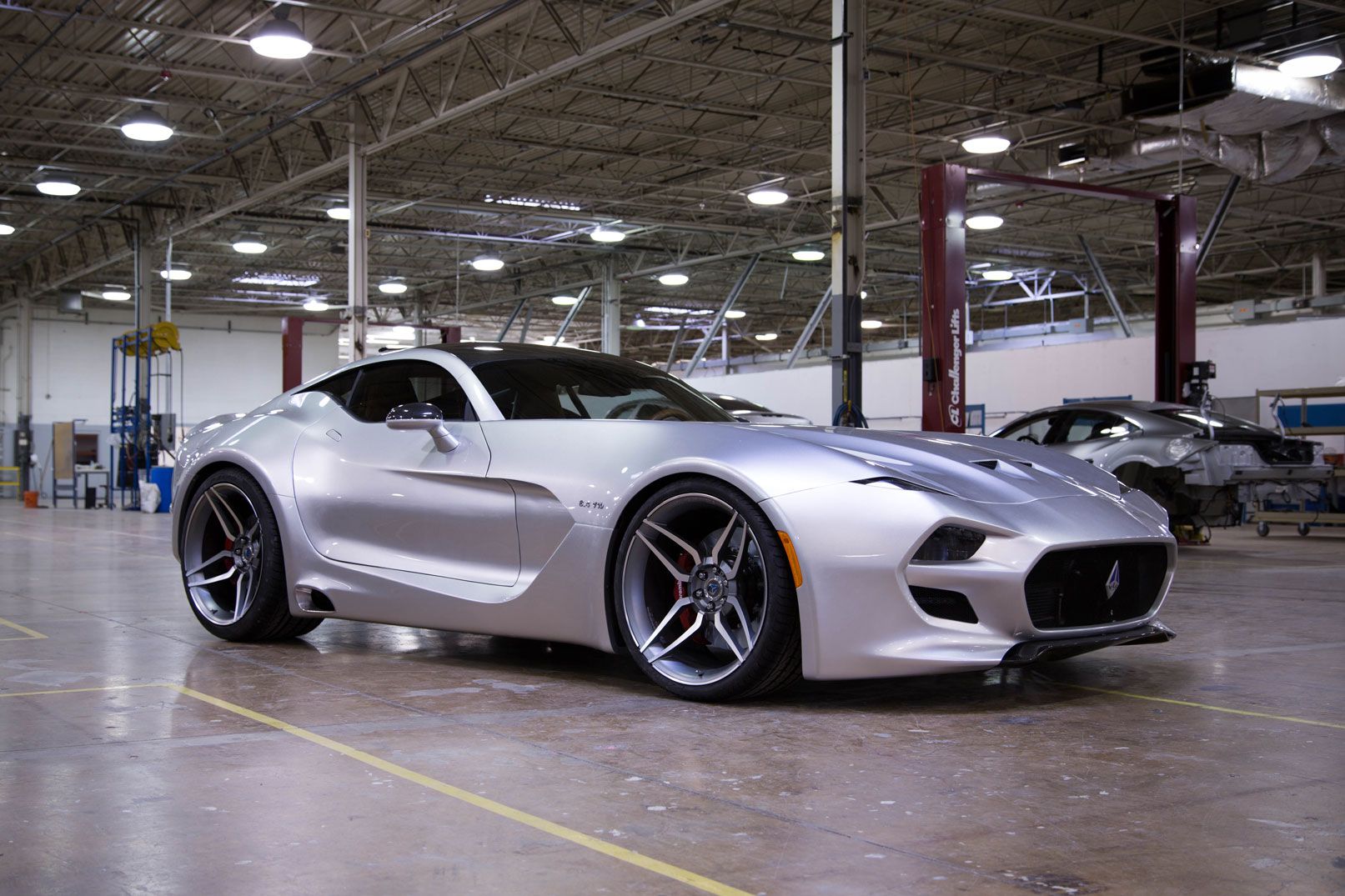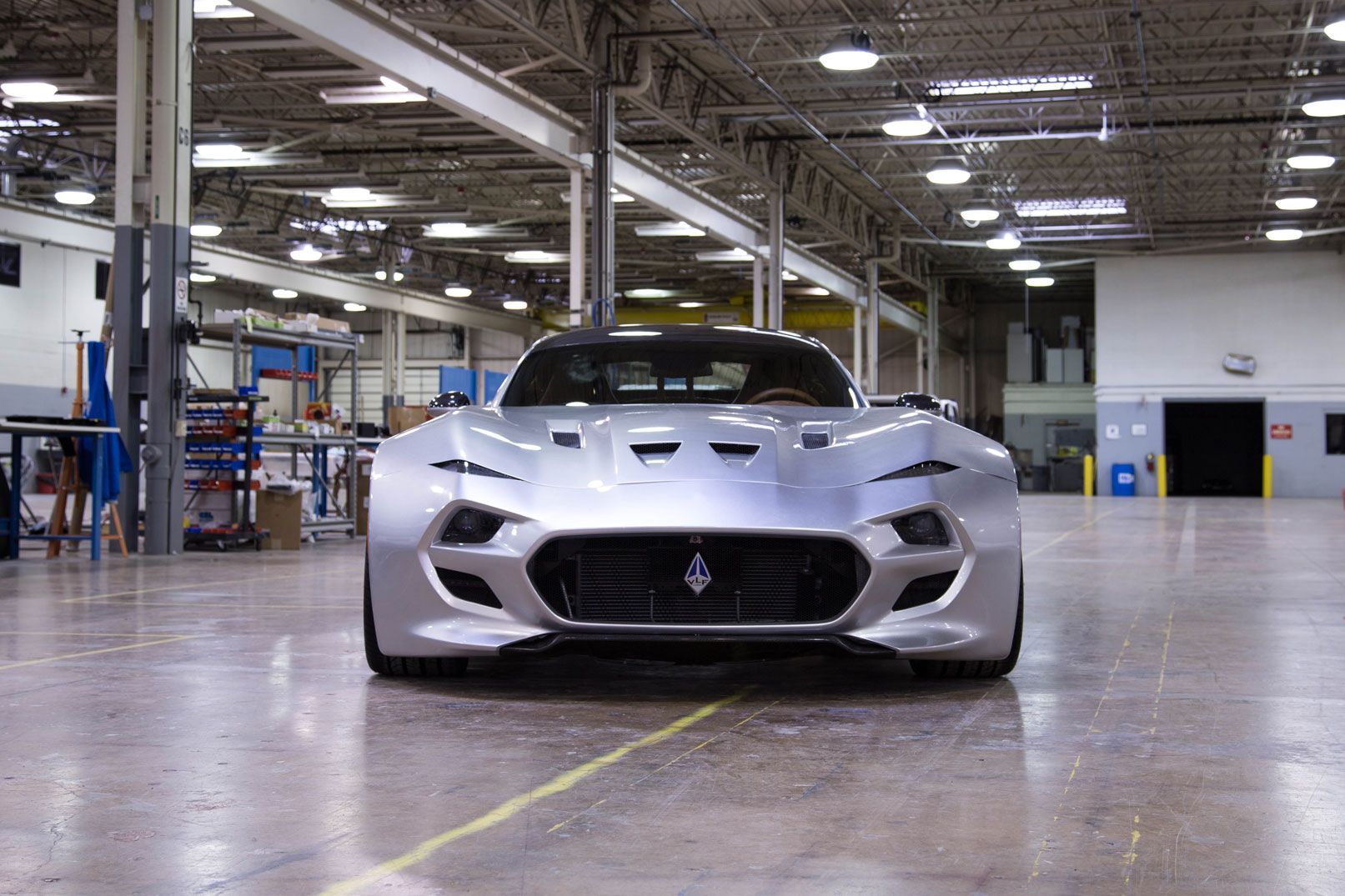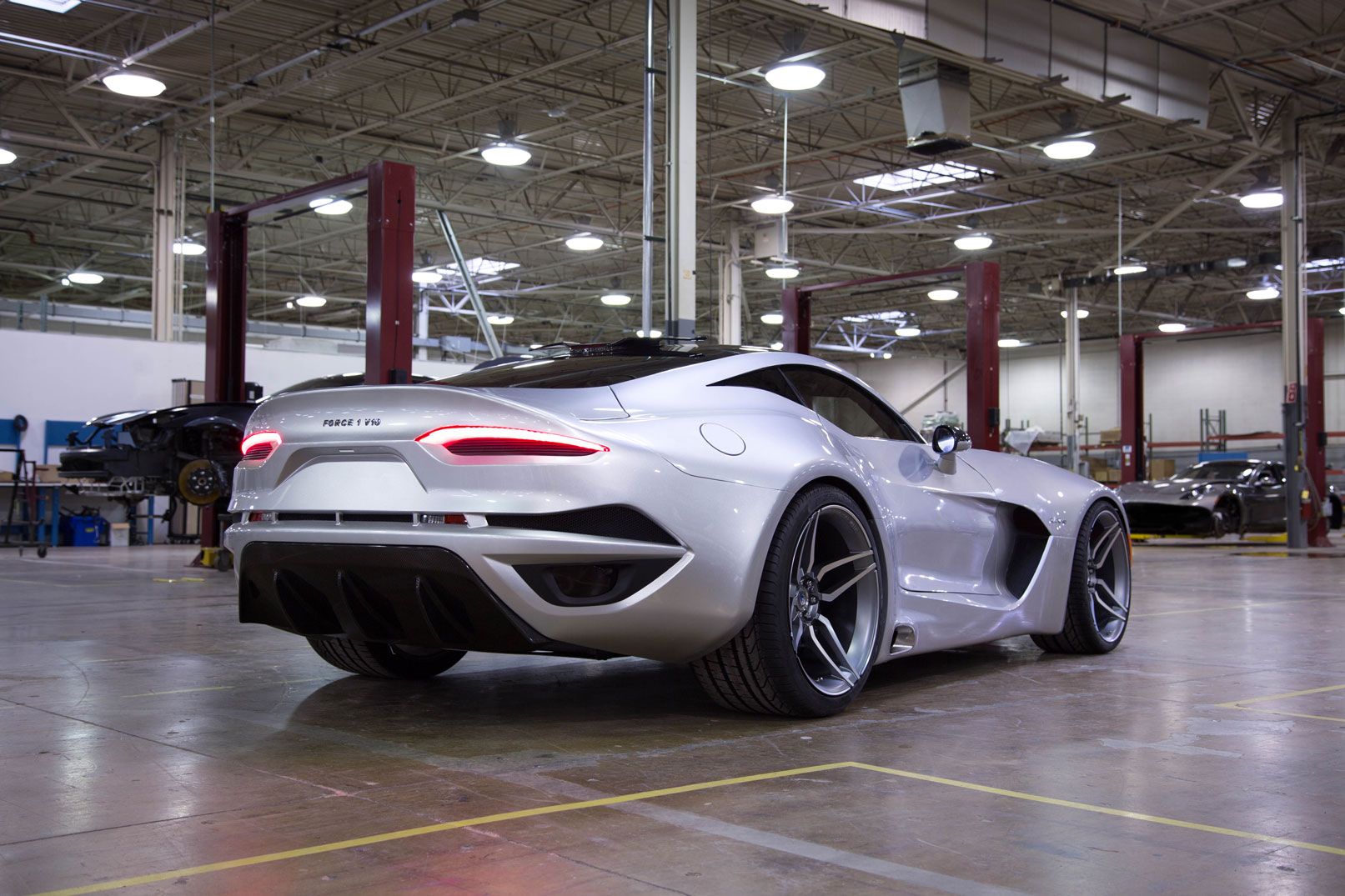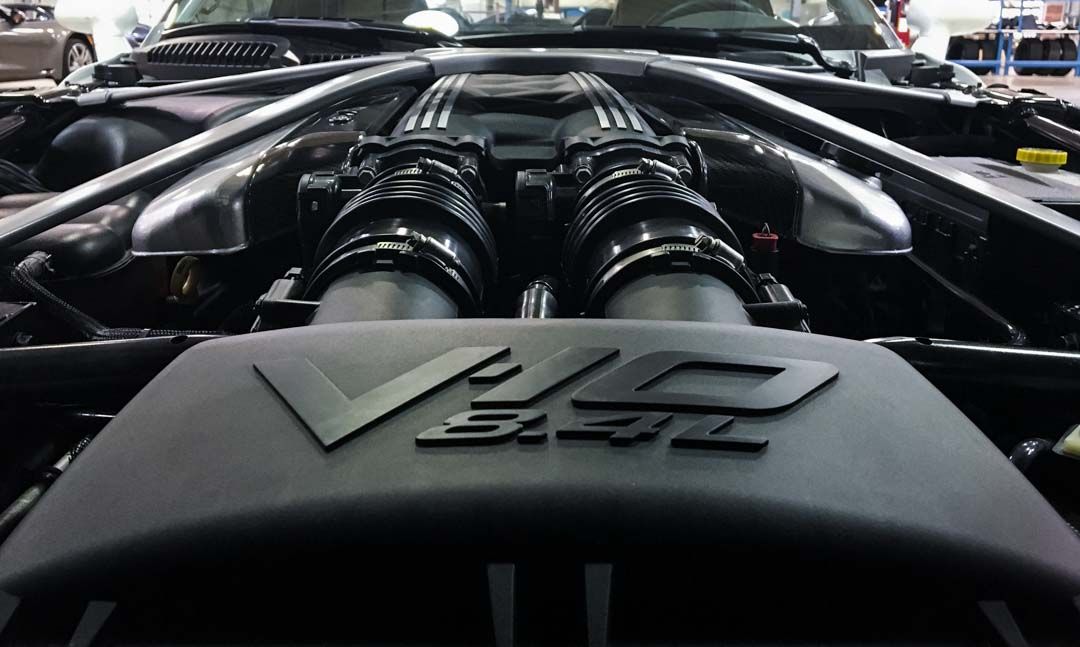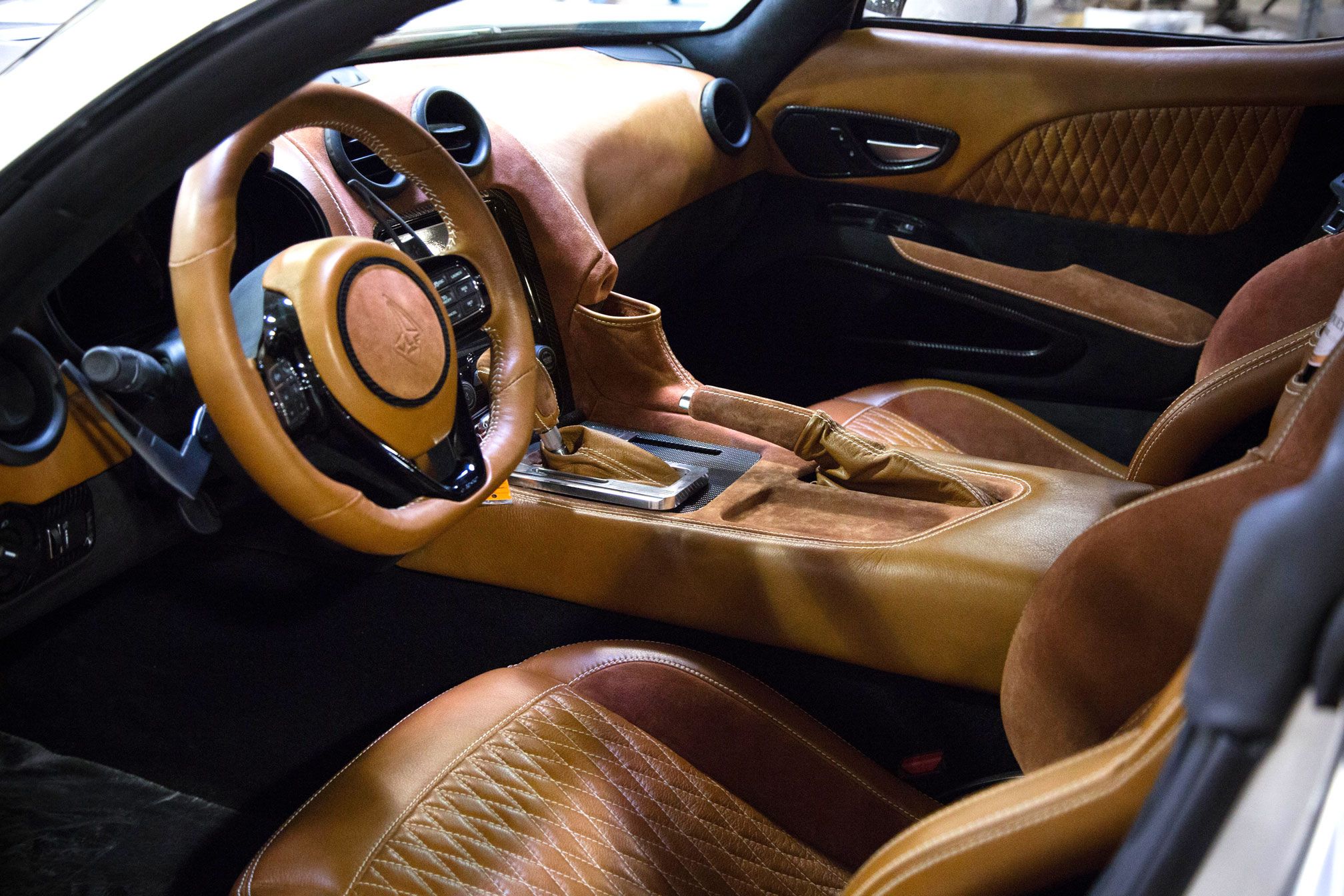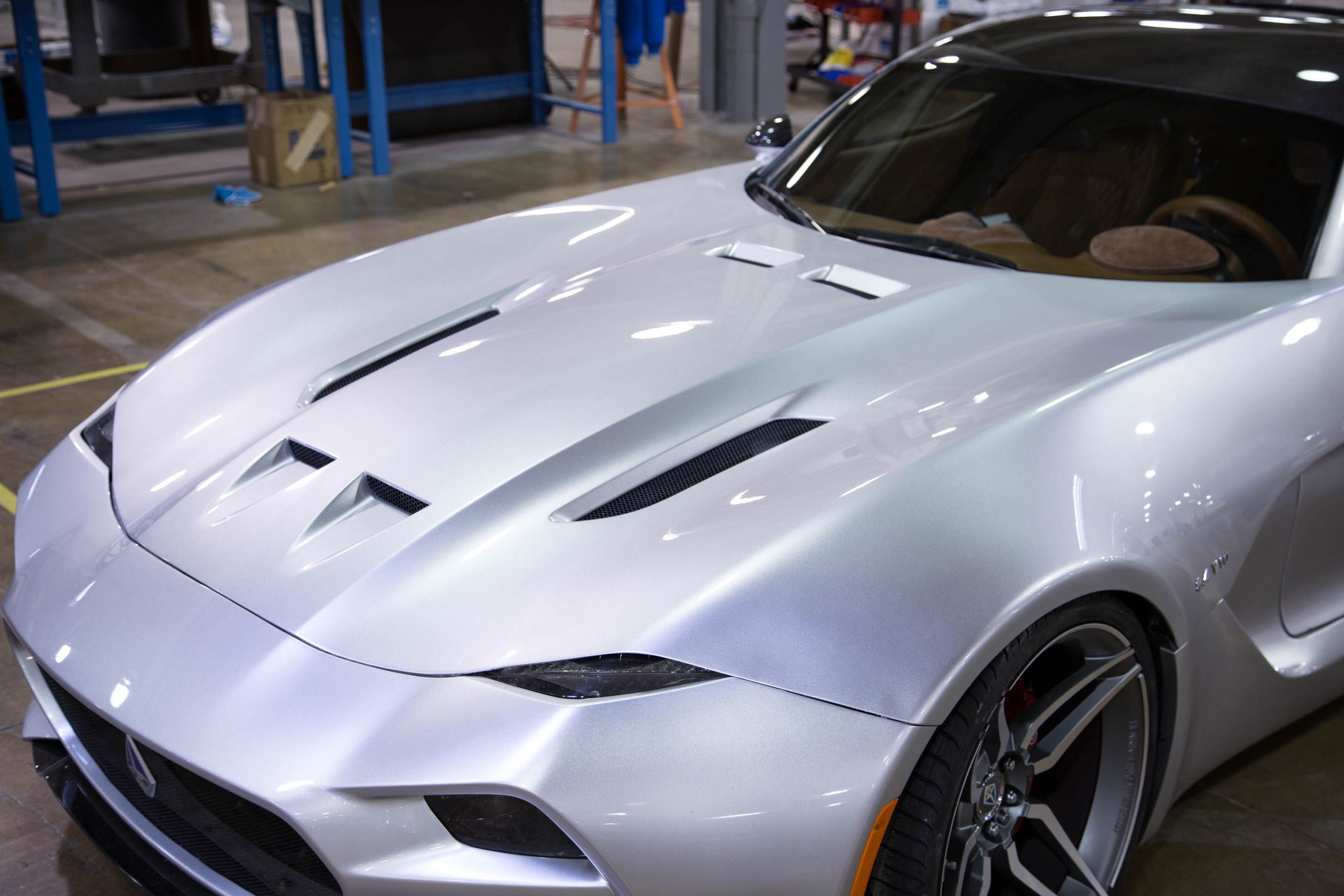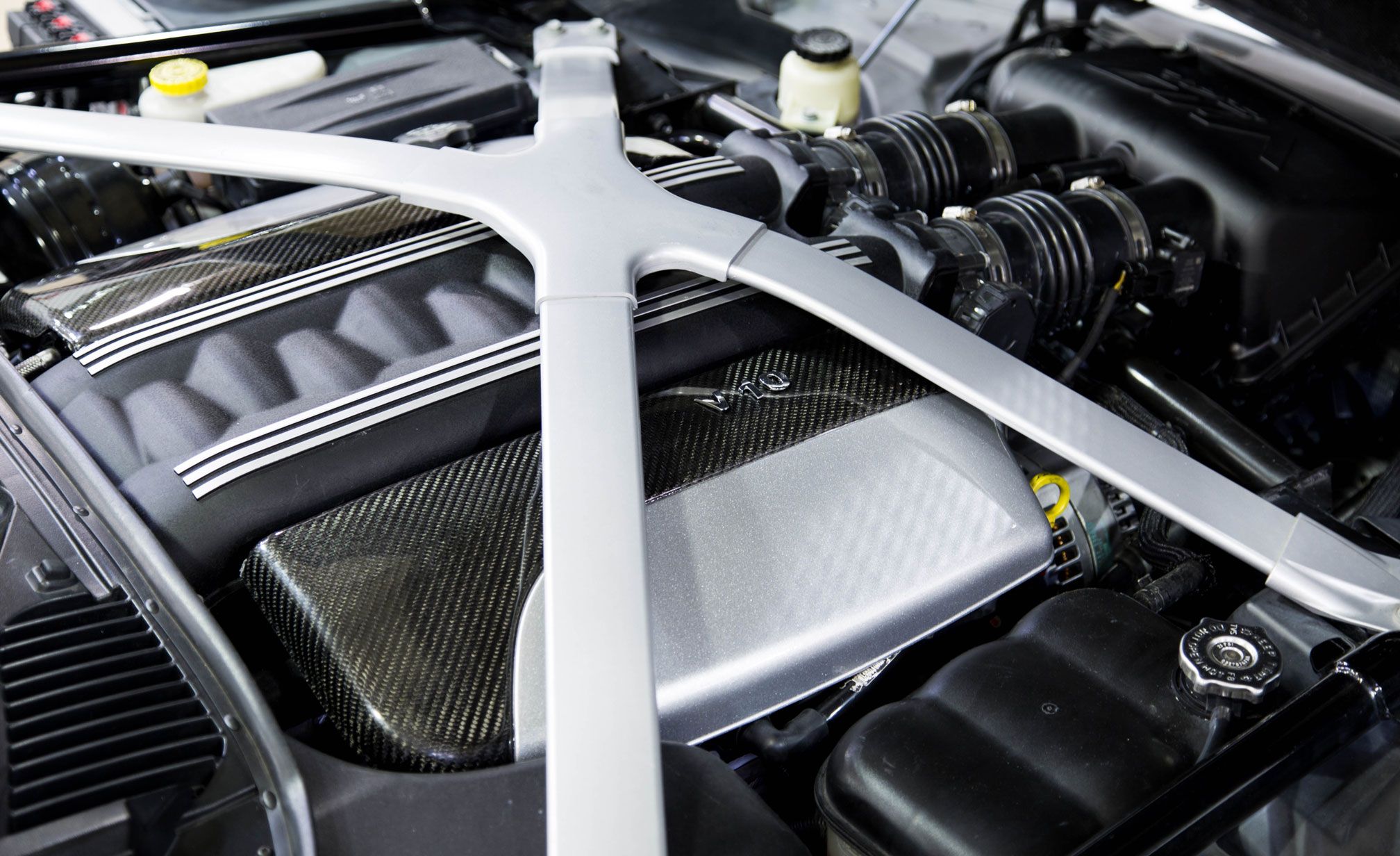This year's Detroit Auto Show->ke222 hosted many interesting debuts, but none is as exotic as the VLF Force 1. Did I hear someone ask what the hell is a VLF? Well, it's a legitimate question, as the company is only a few days old. Its complete name is VLF Automotive and it's a revival of the VL Automotive brand that was started in 2012 by former GM->ke1024 boss Bob Lutz and former Boeing executive Gilbert Villarreal. Remember the 2013 Destino sedan that looked like a Fisker Karma and had a Corvette ZR1 engine under the hood? It was created by VL Automotive. In 2016, Fisker himself joined Lutz, as did famous Dodge Viper->ke1404 racing driver Ben Keating.
The first project to come from this new collaboration is the Force 1, an aggressive looking supercar->ke177 with a 745-horsepower V-10 engine under the hood. Pretty exciting, right? Well, just wait until you hear all the details behind it.
Development of the Force 1 began in early 2015, when Fisker and Keating began pondering the idea of building a state-of-the-art supercar. The vehicle is based on the most recent iteration of the Dodge Viper, but while the engine retains the configuration found in the FCA-made coupe,->ke141 the exterior design and interior have very little in common with the standard car.
“Force 1 is another dramatic example of what we are going to do at VLF Automotive by combining proven world-class platforms and components with elegant designs to produce stunning bespoke luxury sports vehicles” said Bob Lutz, chairman of VLF Automotive, hinting that other bespoke vehicles are underway. But, until that happens, let's have a closer look at the VLF Force 1.
Continue reading to learn more about the VLF Force 1.
2017 VLF Force 1
- Make: Array
- Model: 2017 VLF Force 1
- Engine/Motor: V10
- Horsepower: 745 @ 6100
- Torque: 638 @ 5000
- [do not use] Vehicle Model: Array
Exterior
Even though it is based on the Dodge Viper, the Force 1 looks almost nothing like it, with very few details giving away its origins. The sculpted hood, the roof, and the rear fascia provide a few hints in that direction, but VLF's first supercar is as unique as they get.
The styling is definitely aggressive and distinctive. The front end not only features a massive gaping mouth flanked by a pair of large outlets, but also has ultra-thin headlamps. The Force 1 looks really angry and I wouldn't be very comfortable with one in my rear-view mirror. Assuming this supercar would spend much time behind other vehicles, that is!
The Force 1 is a Fisker from front to rear, featuring styling cues we've already seen on the Karma. Of course, the coupe is significantly more menacing to look at and it could easily be turned into a race car with the right aerodynamic add-ons. The sculpted body panels, the long hood, and short front overhang gives it classic American sports car proportions similar to the likes of the iconic Shelby Daytona Coupe.
Making the Force 1 that much more special is its full carbon-fiber body and massive, 21-inch, Fisker signature wheels. The vehicle tips the scales at 3,395 pounds, making it slightly lighter than the Viper ARC. The Force 1 also incorporates many downforce-inducing elements such as deep front spoiler and aggressive rear diffuser, both finished in carbon-fiber. At the top of the rear glass sits a wing spoiler that works in conjunction with the one atop the rear fascia.
Exterior Dimensions
|
Length |
4,545 MM (178.93 Inches) |
|
Width |
2,018 MM (79.44 Inches) |
|
Height |
1,243 MM (48.93 Inches) |
|
Wheelbase |
2,512 MM (98.89 Inches) |
Interior
VLF didn't have much to say about the Force 1's interior, but the photos reveal a bespoke cabin wrapped in hand-stitched, ultra-soft leather, Alcantara, and a new design for the upholstery. The cockpit remained unchanged compared to the Viper's, but the new materials make a huge difference. The area around the gear shifter and brake lever are covered in Alcantara, as are the armrests in the door panels and the center section of the steering wheel. You can't get any of these features on the Viper. Also, both the door panels and the seating surfaces feature diamond quilting. Interestingly enough, the Force 1 can also be ordered with a champagne holder. Needless to say, VLF just built the most luxurious Viper on the market.
Drivetrain
The Force 1 gets its juice from the same 8.4-liter V-10 found in the Viper, but VLF tweaked the naturally aspirated unit to deliver 745 horsepower and 638 pound-feet of torque. That's an extra 100 horses and 38 pound-feet, which makes quite a difference performance-wise. Specifically, the Force 1 needs only three seconds to reach 60 mph from a standing start, three tenths of a second quicker than the Viper, and hits a top speed of 218 mph, 12 mph more than the Dodge. Moreover, it can complete the quarter mile in less than 11 seconds, with VLF claiming a 10.97-mph sprint with a trap speed of 136.88 mph.
To deliver these impressive figures, VLF also equipped the car with Pirelli P Zero tires.
In the transmission department, the Force 1 comes standard with a six-speed manual. The company doesn't say whether it's the same Tremec TR6060 from the Viper, but it's very likely. Unlike the Viper, however, VLF's supercar can also be ordered with a six-speed automatic with paddle shifters. While purists might hate the idea, I'm sure the Force 1 will get the attention of Viper enthusiasts unhappy about Dodge's refusal to add an automatic.
Drivetrain Specifications
|
Engine |
8.4 L V10 |
|
Output |
745 HP @ 6,100 RPM |
|
Torque |
638 LB-FT @ 5,000 RPM |
|
Top speed |
218 MPH |
|
0-60 MPH |
3.0 seconds |
|
1/4 mile |
10.97 seconds @ 136,88 MPH |
Prices
Pricing for the Force 1 starts from $268,500, which seems like a whole lot compared to the Viper ACR, which is priced from $117,895. However, the sticker doesn't seem that far fetched when you add in the fact that VLF will build only 50 units and include the unique opportunity to attend two racing events per year with Ben Keating as part of the team, and with full access in the paddock and in the pits. Production of the Force 1 will begin at the end of April 2016 in Auburn Hills and the cars will become available through Ben Keating's Viper Exchange specialty dealership.
Competition
Dodge Viper ACR
The ACR might not have the Force 1's output and luxurious interior, but its race-bred internals make it a better track vehicle than the VLF. Thanks to its comprehensive aero package, the ACR is only slightly slower than the Force 1 in a straight line and quicker on any race track around the world. In fact, the Viper ACR can brag about holding no fewer than 13 lap records on American motorsport courses, including Laguna Seca, Road Atlanta, and Willow Springs Raceway. You definitely can't get that with the Force 1. Moreover, the ACR is a bargain compared to the VLF's coupe at only $117,895.
Find out more about the Dodge Viper ACR here.
Chevrolet Corvette Z06
If you're looking for a factory-built car that's quicker than the Force 1, the Corvette Z06 is a sports car you need to consider. Based on the seventh-generation Corvette Stingray, the Z06 features an extensive aerodynamic body kit, a number of race-bred internals, and a supercharged, 6.2-liter V-8 engine. The V-8 sends a whopping 650 horsepower and 650 pound-feet of torque to the wheels and enables the coupe to hit 60 mph in only 2.95 seconds with the automatic transmission. The manual will get you there in 3.2 ticks. On top of being quicker, the Z06 is also significantly cheaper, retailing from $78,995.
Read more more about the Chevrolet Corvette Z06 here.
Ford Mustang Rocket
The Rocket might be based on the Ford Mustang, but that's not to say it is slow or dull by design. Also developed by Henrik Fisker, this time around in cooperation with Galpin Auto Sports, the Rocket is not only menacing to look at, but its supercharged, 5.0-liter V-8 cranks out no fewer than 725 horsepower. Its cabin is also draped in some of the finest materials on the market and complemented by carbon-fiber and aluminum accents. It's also significantly more affordable than the Force 1, fetching less than $150,000 including the base Mustang GT.
Find out more about the Ford Mustang Rocket here.
Conclusion
Judging by what the current Dodge Viper can offer, any supercar that is based on FCA's coupe is fantastic to say the least. The cool thing about the Force 1 is that it's more than just a beefed up Viper. VLF took its time to build a completely new body and reworked the interior into something that's worthy of a Bentley or Aston Martin badge. Fisker may have failed with the Karma, but the Force 1 looks as if the man that designed the Aston Martin DB9 and BMW Z8 can still create cool cars. The good news is that the Force 1 is an all-American machine.

